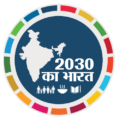The grand tapestry of human progress, the Sustainable Development Goals (SDGs) are nothing short of the guiding light illuminating the path toward a brighter and more equitable future. Envisioned within the framework of Agenda 2030, these global objectives have not only ushered in an era of optimism but also beckoned nations, organizations, and individuals to rally together, striving for a world where prosperity, equality, and well-being reign supreme. Among the plethora of SDGs, investing in education and healthcare stands as a pillar upon which the entire edifice of global development is built. Today, we embark on a journey to delve deep into the significance of these two intertwined aspects and explore how they propel us toward a brighter tomorrow.
Sustainable Development Goals: A Ray of Hope
The 17 Sustainable Development Goals, or SDGs, set forth by the United Nations, are a veritable roadmap guiding humanity towards a brighter future by 2030. They represent a shared vision of progress and serve as a universal call to action to end poverty, protect the planet, and ensure prosperity for all. To succeed in this grand endeavor, we must recognize the interdependence of these goals, as they are inextricably linked, each influencing the other.
The Heart of Agenda 2030: Education
SDG 4: Quality Education assumes the role of the cornerstone of sustainable development. This goal pledges to ensure inclusive and equitable quality education and promote lifelong learning opportunities for all. It’s more than just educating minds; it’s about nurturing potential and fostering critical thinking, creativity, and cultural diversity.
Education opens doors, erases disparities, and empowers individuals. A well-educated society is more likely to exhibit strong economic growth, reduced inequalities, and increased access to employment opportunities. It’s a catalyst for change, fostering innovation and resilience. Whether it’s primary, secondary, or tertiary education, the impact ripples through society, transcending borders and demographics.
From a global perspective, achieving SDG 4 by 2030 will not only shape a more enlightened generation but will also pave the way for future generations to build a sustainable and equitable world. It’s an investment that yields dividends in the form of a more just and prosperous world.
The Pillar of Well-being: Healthcare
SDG 3: Good Health and Well-being is the second cornerstone of our journey towards sustainable development. It’s not a stretch to say that good health is the bedrock upon which all achievements are built. Without it, even the loftiest of goals remain elusive.
The core of this goal is to ensure healthy lives and promote well-being for all at all ages. It’s a call to action to reduce maternal mortality, end preventable deaths of newborns and children, and combat communicable and non-communicable diseases. At its heart, it’s about fostering physical and mental health, ensuring access to quality healthcare services, and reducing the global burden of disease.
When individuals enjoy good health and well-being, they are more productive and resilient. Communities thrive, and nations prosper. With access to healthcare, people can lead better lives, pursue their dreams, and actively participate in the journey toward sustainable development.
The Synergy Between Education and Healthcare
Education and healthcare are not solitary endeavors but interconnected facets of the same coin. They share a symbiotic relationship, each reinforcing the other.
Education Fuels Healthcare
Education empowers individuals with knowledge about health, hygiene, and disease prevention. Informed individuals are more likely to make healthier choices, thus reducing the burden on healthcare systems. An educated populace not only understands the importance of vaccination and regular check-ups but is also better equipped to recognize symptoms and seek medical assistance when needed.
Moreover, education nurtures the healthcare professionals of tomorrow. Doctors, nurses, pharmacists, and researchers all emerge from educational institutions. These individuals, armed with knowledge and skills, are at the forefront of healthcare delivery, research, and innovation.
Healthcare Enables Education
On the flip side, healthcare plays a pivotal role in ensuring that education is a viable and accessible option for all. Healthy children are more likely to attend school regularly and perform better academically. The availability of healthcare services in schools, including vaccinations, regular check-ups, and nutritional support, paves the way for an environment conducive to learning.
Healthcare also contributes to a society’s productivity by reducing the burden of disease. When people are healthy, they can work, earn, and invest in education for themselves and their families.
The Power of Digital Engagement: #2030KaBharat
In today’s interconnected world, digital engagement and social media have emerged as potent tools for raising awareness about the SDGs. The hashtag #2030KaBharat, translating to “India of 2030,“ has gained immense traction in India and beyond. It’s more than just a hashtag; it’s a rallying cry, a call to action, and a promise for a better future.
By harnessing the power of digital platforms, individuals and organizations can magnify their impact. Through sharing stories, advocating for change, and building communities, the digital realm is instrumental in galvanizing support for SDGs, particularly in the context of education and healthcare.
The Way Forward: A Shared Responsibility
Investing in education and healthcare is not the sole responsibility of governments or organizations; it’s a shared duty that extends to individuals as well. We, as a global community, must recognize that achieving SDGs by 2030 necessitates collective effort.
Every decision we make, every action we take, should be viewed through the lens of sustainability and well-being. We must advocate for policies that support quality education and accessible healthcare. We must demand accountability from our leaders and institutions to ensure the goals are met. And we must commit to making sustainable choices in our daily lives, from reducing our carbon footprint to supporting initiatives that advance the SDGs. The path to sustainable development is paved with knowledge and well-being. Education and healthcare are the twin pillars that will carry us forward. Let us embrace this journey, united by the belief that a brighter, more equitable future is within our reach.

